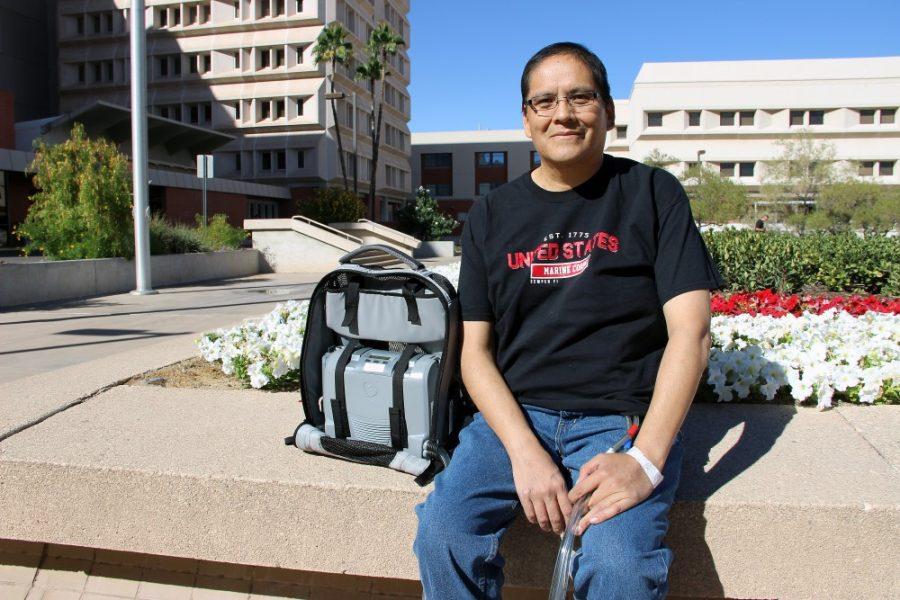On any given day, there are approximately 3,000 people on the waiting list to get a heart transplant. However, with only about 2,000 donor hearts available annually, the wait times for these patients can stretch longer than a year.
For someone with a failing heart, a year may be too long.
SynCardia Systems, Inc. aims to remedy this by implanting patients with its Total Artificial Heart, providing them with a “bridge to transplant.” The device, which was recently featured in a documentary on the Smithsonian Channel, was developed with the help of several surgeons and engineers at the UA.
The SynCardia temporary Total Artificial Heart is the world’s first and only device of its kind to be approved for use by the Food and Drug Administration, said Michael Garippa, CEO and president of SynCardia.
Originating from a University of Arizona Medical Center program, Syncardia was formed with the help of Dr. Jack Copeland, a renowned heart surgeon who, in 1985, became the first person to successfully use the Jarvik 7 Total Artificial Heart as a bridge to transplant. The patient received a donor heart after living for nine days on the Jarvik 7, which was later renamed the Total Artificial Heart.
“[It operates] a little [differently] than your heart, but it achieves the same thing,” said Richard Smith, chief technical officer and co-founder of SynCardia who is the technical director of UAMC’s Artificial Heart/Perfusion Programs. “Your blood pressure is still the same; the amount of flow is [actually increased], and so your body doesn’t know any different.”
Here’s how it works: a piston contained in a “driver” that is outside the body pumps pulses of air into two tubes that enter the body and connect to the artificial heart. The air pressure created fills a diaphragm inside each of two rigid containers that mimic the ventricles of a human heart, pushing blood along its course throughout the body, Smith said.
Out of the 1,260 implantations, the valves on the Total Artificial Heart have never failed, and the diaphragms have a failure rate of less than 1 percent over the lifetime of the device, said Don Isaacs, vice president of communications for SynCardia, which is based in Tucson.
That kind of reliability is one of the reasons Dr. Zain Khalpey, the director of Clinical and Translational Research at UAMC, said he feels confident when he performs the implantations, which require the removal of the majority of the patient’s heart.
“It’s a very durable device … and very low-maintenance,” Khalpey said, “but it’s also a very powerful device in the sense that it gives you very good [blood flow] to the kidneys and to the lungs and to the rest of the body.” The Total Artificial Heart’s pulsating action makes it preferable to continuous-flow devices in that it replicates the natural beating of the heart, Khalpey added.
SynCardia is currently performing clinical trials in the U.S. to test the efficacy of a portable driver that fits into a backpack, which would allow patients to leave the hospital, as well as a smaller artificial heart that can be implanted in people with smaller frames, such as children.
Christopher Larsen, 43, was implanted with the Total Artificial Heart in July after being diagnosed with cardiomyopathy, or a weakened heart. Although he was initially hesitant to have his heart replaced with a machine, Larsen said that he lost all reservations the day before he was scheduled to receive the implant.
“I was with my family and my heart stopped,” he said, adding that a screen displaying his vital signs let him “know for sure” that his heart wasn’t beating. After several seconds, during which time Larsen said he couldn’t breathe, his heart resumed its rhythm.
“After that, I had no issues with getting an artificial heart,” Larsen said.
As part of a clinical trial, Larsen’s artificial heart is run off of the battery-powered “Freedom” driver. The compact power source fits inside a backpack that he wears during his daily strolls around the UAMC campus.
Larsen said he is grateful that he was able to get the implant.
“The good thing about the artificial heart is, well, I’m alive; I’m walking around; I’m not bedridden,” Larsen said. “I’m very thankful.”









